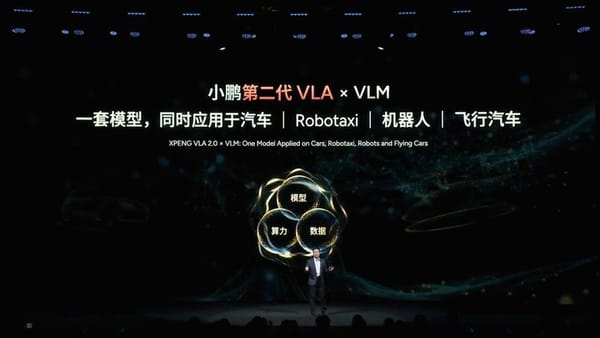Palantir Founding Engineer’s Deep Dive: FDE Model as the PMF Paradigm in the Agent Era

Doing Things That Don’t Scale — at Scale



---
Introduction

The Forward Deployed Engineer (FDE) model is Palantir’s distinctive go-to-market (GTM) and product deployment approach — recently one of Silicon Valley’s hottest discussion points.
> In a YC survey, more than 100 startups are hiring FDE-related staff; three years ago, that number was zero.
This article compiles the deep reflections of Bob McGrew, former Palantir exec and ex-Chief Research Officer at OpenAI. As Palantir’s second engineer, Bob witnessed the birth of the FDE approach, the product creation process, talent selection, and team building.
He explains what the FDE model really is and why, in the AI Agent era, it may represent a new organizational paradigm and product-market fit methodology for startups.
---
Key Points
- FDE teams bridge product capabilities and customer needs, focusing on delivering valuable outcomes — not just supplying software.
- FDE means conducting product exploration inside the client’s operations.
- While similar to consulting, FDE is about doing inherently “unscalable” things in a scalable way — via a core, customizable product (Palantir’s Ontology).
- AI Agents lack ready-made standardized products, making FDE highly relevant: extensive in situ product discovery is required.
- Unlike standard SaaS, organizational contracts under FDE tend to grow larger over time.
- In the Agent era, FDE is likely to become the new PMF model for agent-focused startups.
---
In today’s AI-driven wave, tools now enable efficient cross-platform publishing and monetization. For example, AiToEarn — an open-source global AI content monetization platform — helps creators generate with AI, publish across Douyin, Kwai, WeChat, Bilibili, Rednote, Facebook, Instagram, LinkedIn, Threads, YouTube, Pinterest, and X (Twitter), while tracking performance analytics.
More info: AiToEarn官网 · AiToEarn博客 · AiToEarn开源地址
---
01. What Exactly Is FDE?
Host Observation:
At a recent YC AI conference, Bob noticed founders cared less about ChatGPT and more about Palantir’s FDE.
Definition:
FDEs are technical experts embedded onsite with customers to bridge product capabilities and business needs.
Process:
- Start with your product and approach a new client.
- Often, their target problem is new to you.
- Working closely, adapt and customize the product to deliver high-value use cases.
Origin Story at Palantir:
- Early focus: software for intelligence agencies — but no direct contacts or clear scopes (classified work).
- Solution: show demos, gather feedback, and iterate.
- Shyam Sankar reframed deep onsite customization from a “service” into a product discovery process.
---
Why FDE Matters in the AI Agent Era
With AI Agents evolving quickly yet lacking standardized products, embedding experts onsite accelerates discovery.
The gravel road → superhighway metaphor applies:
- FDE builds working (local) prototypes onsite.
- HQ product teams abstract them into scalable, repeatable solutions.
---
Echo & Delta Teams in FDE
Echo Team
- Embedded analysts; domain experts.
- Engage clients, discover valuable use cases, maintain relationships.
Delta Team
- Deployment engineers with strong rapid prototyping skills.
- Build, deploy, and prove working solutions, quickly.
---
02. Building an FDE Team
Echo Team Talent Profile
- Deep domain expertise (e.g., ex-Army officer, healthcare veteran).
- “Heretics” — understand current methods yet recognize their flaws.
Delta Team Talent Profile
- Excellent at prototyping over perfection.
- Comfortable delivering working code fast, even if later rebuilt.
---
Startup-Founder Parallels:
- FDE training mirrors founder skills: problem discovery, iteration, embedded customer work.
- Many Palantir alumni went on to found unicorns (Anduril, Hex, Peregrine, Chapter, ElevenLabs, Ironclad, Blend, Sourcegraph…).
---
Palantir Mafia: Founder Network
Tight alumni connections, investments (Palumni VC), and cultural carryover make FDE alumni prolific startup founders.
---
03. FDE Is Not Consulting
Why not just consulting?
- Palantir starts at a loss onsite, but costs per value delivered drop as product evolves.
- Product team collaboration is critical to generalize local discoveries for reuse.
Failure Mode:
Rolling one-off features directly into the product — creates over-specialization.
---
Example: Palantir Ontology
- Generic schema: objects, properties, media, links.
- Site-specific semantics defined per deployment — but general capabilities reusable.
Key Product Thinking:
Abstract common operations across entity types rather than hardcoding workflows.
---
04. Why FDE = PMF in the Agent Era
AI Agent markets are heterogeneous — like Palantir’s segmented government clients.
Implication:
FDE excels at non-scalable exploration, repeatable segment entry, and maximizing value per client.
Outcome-Based Business Model:
- FDE sells solutions and outcomes, not software licenses.
- Pricing grows with value delivered — contracts often expand over time.
---
Challenges:
Enterprise skepticism, IT bottlenecks, internal politics.
Tactic: Target top-five CEO priorities to secure support.
---
High-Touch vs. Abstraction Decision:
- PMF strategy: Reduce per-customer work, keep contract steady.
- FDE strategy: Increase per-customer value, accept customization.
---
Product Leverage & Demo-Driven Development
Metrics:
- Outcome Value — delivered to client.
- Product Leverage — ease of delivering future outcomes.
Demo Philosophy:
- Build from customer POV.
- Incorporate new features if they strengthen core demo workflows.
- Aim for “I want it now” reaction.
---
Learning Organization Principle:
- Young companies learn faster — a growth advantage.
- Palantir’s founder-rich alumni base stems from constant learning.
---
FDE Opportunity in AI
Rapid AI capability growth outpaces enterprise adoption.
Gap: Transformation requires onsite human creativity + product adaptation.
This is the FDE opening.
---
Analogy: Headquarters product teams (like OpenAI) produce research; FDE-like startups deploy and adapt it for clients.
---

Further Reading
AGI Roadmap Phase Two: Games as Model Training | AGIX PM Notes

In-depth Discussion on Online Learning: 99 Insights… | Best Ideas

The Scaling Law in the Age of Experience | AGIX PM Notes

---
Creators and developers now have open-source tools like AiToEarn to bridge R&D and monetizable deployment — cross-posting AI-generated content and analyzing performance across global platforms.

---
Final Thoughts
As AI research accelerates, adoption lags. Bridging the capability–adoption gap may be the decade’s biggest opportunity.
FDE principles — embedded discovery, outcome-based work, abstracted reusability — can serve AI startups and creators alike.
Platforms like AiToEarn官网 provide powerful parallels:
- AI content generation
- Multi-platform publishing
- Analytics and AI model ranking
By combining product leverage, customer insight, and scalable infrastructure, teams can truly do things that don’t scale — at scale.




